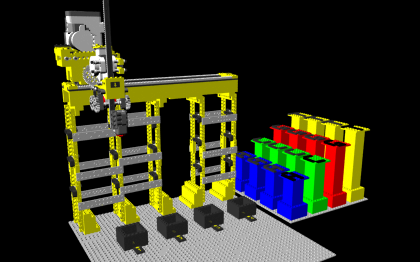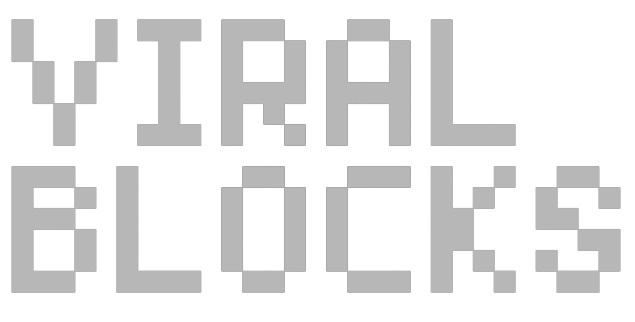- About
- Structures
- Data
- GUI
- Tutorials
- Download
 |
Viral Blocks is an interactive program, ideally forming part of a museum exhibition. It was created with the intention to inform users on the subject of genetics and viruses. The target audience for this program is primarily middle-school/high-school biology students. Viral Blocks presents genomic and viral information visually as 3D animations, making it easier to understand abstract concepts and promoting learning through fun exploration.
The program was created using Processing, an open-source programming language, with the implementation of Lego’s programable computer brick: the Lego® Mindstorms NXT™.

|
|
|
Geometric Shapes
The capsid is a protein layer which protects the genetic material inside a virus. There are three primary types of capsid geometries: complex, helical and icosahedral. The Viral Blocks program uses capsid geometry as a layer of information, which is represented visually using cubes, cylinders and icosahedrons. The colours of the capsids represent a second layer of information, indicating the viral host (the organism the virus infects): blue for bacteria, yellow for fungi, green for plants, and red for animals. In the Viral Blocks program this information, as well as subsequent viral structure information, is summarised as animated tutorials, providing clear program operation basics and background information on the viral structures. |
|
Hair-like Structures
The third layer of information presented in the Viral Blocks program is: viral envelope presence. A viral envelope is a coat made of molecules called lipids, which facilitates the infection of host cells. The Viral Blocks program represents the presence of the viral envelope as a spherical hair-like structure surrounding the same coloured capsid geometry. |
|
Flying Letters
The genetic code, which defines all the unique characteristics of each individual virus, is the fourth layer of information presented in the Viral Blocks program. The end products of the code are proteins. Proteins are some of the most important parts of viral structure and function, responsible for everything from the physical structure of the virus to the mechanism in which viruses reproduce themselves. Proteins are made up of building blocks called amino acids. The virus knows which amino acids to make because the genetic code contains a series of three-letter units called codons. Each codon tells the virus to make a certain amino acid, a bit like an architectural blueprint. For our purposes, genetic information is portrayed as frequencies of the 64 codons present in the genetic code. The codon frequencies in the Viral Blocks program are indicated by letter size and the opacity of the letters. In addition, the program enables isolation of individual codons, allowing easy exploration of the three-letter combinations. |
|
Complete representation of the HIV-1 virus. |
 |
The Sequencer Machine
The final feature of the Viral Blocks program is the ability to mutate viral structures using the Sequencer Machine, created with the Lego® Mindstorms NXT™ programmable computer. The machine is able to read an arbitrary combination of bricks of different heights placed on each of its four bins. Each bin represents a distinct virus characteristic: capsid geometry, host organism, viral envelope presence, and codon frequency. Changes in the brick height combinations among the four bins create drastically different visual representations, which indicate possible mutations in the viruses’ structure and genome. |
|
 |
Introduction |
|
 |
What is a Virus? |
|
 |
Viral Structures |
|
|
 |
Viral Envelopes |
|
 |
Codons and Amino Acids |
|
 |
Genetic Mutations |
|
|
|
|
|
|
| Processing Source Code: |
|
| Libraries:
|
| Code Acknowledgement:
|
|
| Apple Macintosh Installers: |
| Viral Blocks (19MB)† |
| (This version does not support the Lego® Mindstorms NXT™) |
|
|
|
| †Both versions require OPENGL compatible video cards with a minimum of 1280 x 768 resolution, Java 2 SE 5 and JOGL. |
|
| |
|
|
|
|
